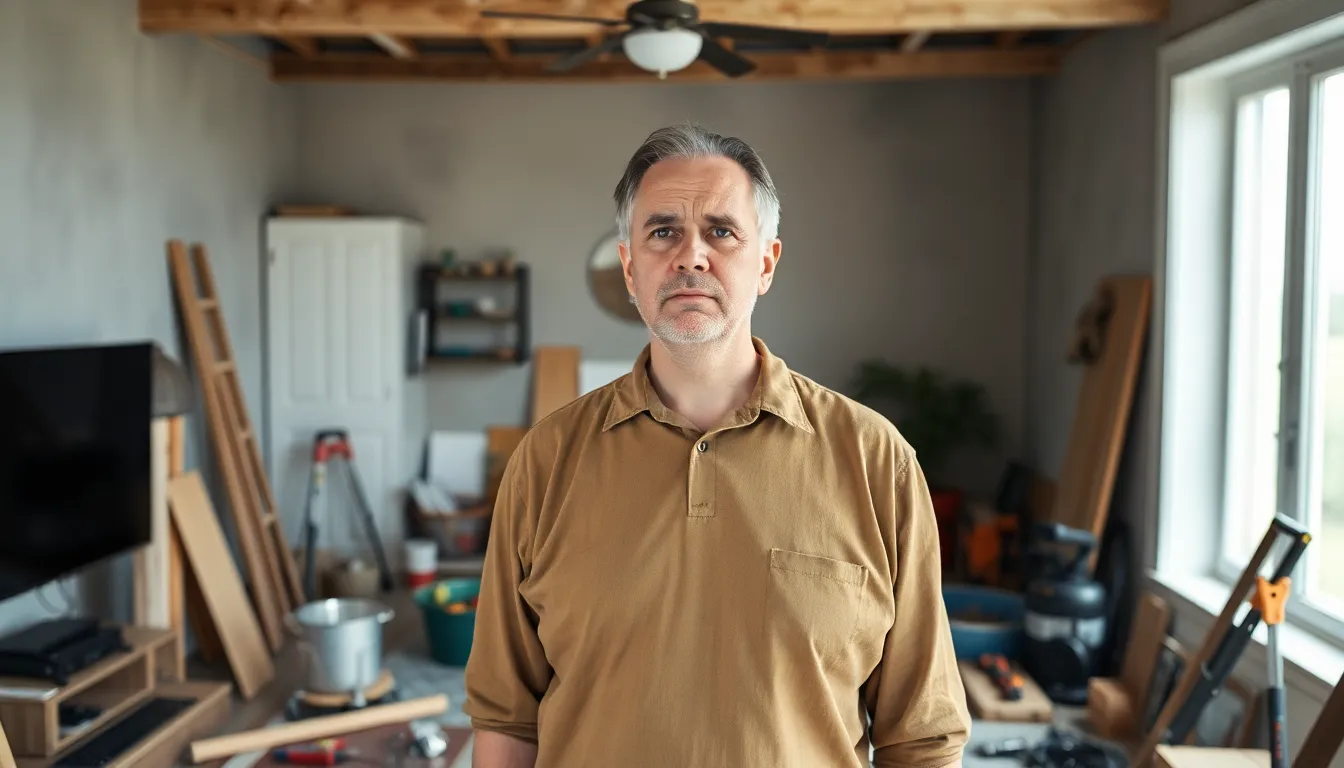Home improvement shows dominated television for years, transforming ordinary homes into jaw-dropping masterpieces. Viewers tuned in weekly, dreaming of their own renovations while secretly judging their neighbors’ questionable wallpaper choices. But suddenly, the airwaves grew quiet. What happened to the DIY dreams and renovation drama that once captivated millions?
As viewers scratched their heads, wondering why their favorite shows vanished, it became clear that the home improvement craze had hit a wall. Was it burnout from endless shiplap and open floor plans? Or perhaps the realization that not everyone can wield a power drill without a trip to the ER? Dive into the quirky reasons behind the decline of these beloved shows and discover why home improvement might be taking a permanent vacation.
Table of Contents
ToggleOverview of Home Improvement Trends
Home improvement shows gained popularity in the early 2000s, showcasing innovative renovations and inspiring audiences. Viewers flocked to programs that highlighted dramatic before-and-after transformations. Shows like “Extreme Makeover: Home Edition” captivated audiences with touching stories of families and comprehensive home renovations. Enthusiasm for DIY projects surged as viewers sought to replicate these transformations in their own homes.
By 2015, a noticeable shift occurred. Viewers began to experience fatigue from the overwhelming number of home improvement shows available. Research from Nielsen indicates viewership dropped as audiences sought alternative entertainment. The rise of streaming platforms contributed to this trend, as many opted for scripted series or documentary-style content instead.
Trends in home improvement also shifted toward minimalism and sustainability. Popularity grew for eco-friendly renovations and small-space solutions. Homeowners focused more on functionality than on extravagance. The movement towards minimalism reflects a broader cultural change where individuals prioritize simplicity over complexity.
Additionally, economic factors played a role in the decline of home improvement shows. Data from the National Association of Realtors shows that rising material costs and labor shortages hindered many DIY projects. As homeowners faced increased expenses, their willingness to undertake significant renovations diminished. This economic reality led to a waning interest in renovation shows that once flourished.
Presently, the future of home improvement programming remains uncertain. Audience preferences are continually evolving, making it difficult for producers to gauge future hits. Innovations in technology, such as augmented reality, might reinvigorate interest in home improvement concepts. Ultimately, the landscape continues to change, reflecting the shifting desires of viewers.
Factors Leading to the Decline

Several pivotal factors contributed to the decline of home improvement programming. These influences ranged from economic shifts to changes in consumer preferences.
Economic Shifts
Rising material costs posed significant challenges for homeowners. Many found it difficult to invest in renovations when expenses escalated. Labor shortages exacerbated the situation, leading to delays and increased prices for DIY projects. Financial insecurity also influenced viewers, making them hesitant to engage in home improvement endeavors. Statistics show that DIY spending decreased approximately 10% from 2020 to 2022. Consequently, this economic landscape diminished the allure of home improvement shows, leaving audiences less interested in costly renovations.
Changes in Consumer Preferences
Homeowners increasingly gravitate towards minimalism and sustainability. Many individuals now prioritize function over flair when considering home enhancements. Trends toward eco-friendly living shaped this preference, prompting them to seek out practical solutions. Additionally, viewers turned to streaming platforms, favoring scripted narratives over traditional home renovation shows. Data indicates that viewership for reality shows dropped by 20% from 2017 to 2022. This shift in interest led to a decrease in the demand for home improvement content, signaling a notable change in consumer behavior.
Impact of Technology
Technology significantly influenced the decline of home improvement shows. The rise of smart home devices changed homeowner priorities. Automation and connectivity introduced convenience that surpassed traditional renovations. In recent years, home automation systems, like smart thermostats and lighting, gained traction, leading to a shift toward integrating technology rather than physical changes.
Rise of Smart Homes
Smart home technology became a dominant trend in the 2020s. Consumers increasingly opted for gadgets that offer energy savings and enhanced security. Data shows that 70% of homeowners considered smart home features essential during renovation planning. Most homeowners prefer easy-to-use devices over complex remodeling projects. As a result, interest in traditional home improvement shows diminished, with viewers favoring content that showcases smart technology applications. With innovations continuously emerging, viewers now gravitate toward shows that highlight these advancements instead of standard renovation techniques.
DIY Culture Growth
The DIY culture witnessed remarkable growth in recent years. Social media platforms fueled inspiration and access to tutorials, motivating individuals to take on projects themselves. Statistics indicate a 15% rise in online DIY video viewership from 2020 to 2022, emphasizing the public’s eagerness for hands-on guidance. Many people embraced this trend, finding satisfaction in personalizing their spaces through smaller, manageable tasks. Consequently, traditional home improvement programs struggled to maintain interest, as individuals increasingly sought resources that empower their self-sufficiency rather than relying on professionals.
Cultural Reflections
Home improvement shows once held a significant place in popular culture. As trends evolved, these shows began to wane in favor of different formats and themes.
Television Influence
Television played a critical role in shaping home improvement programming. Early 2000s saw a surge in popularity with programs featuring dramatic transformations. However, by 2015, viewership fatigue emerged due to the overwhelming number of shows, leading audiences to seek variety in their viewing habits. Changes in streaming options also shifted preferences toward scripted series that provided diverse storytelling. Data indicates that viewership for reality shows dropped by 20% from 2017 to 2022, showcasing how quickly audience interest can fluctuate. This shift signifies a pivot away from the DIY aesthetic that home improvement shows once dominated.
Social Media Impact
Social media has transformed how people engage with DIY projects. Platforms such as YouTube and Instagram fueled a rise in DIY culture, empowering individuals to undertake projects without professional help. A 15% increase in online DIY video viewership from 2020 to 2022 illustrates that more people are turning to these platforms for inspiration and guidance. Content on social media often showcases creativity and self-sufficiency, attracting viewers away from traditional home improvement programming. As homeowners increasingly prioritize personal expression and innovation, the demand for typical renovation shows diminishes, leaving behind a gap that new formats must fill.
The decline of home improvement shows reflects a significant shift in viewer preferences and cultural values. As audiences gravitated towards minimalism and smart technology the allure of dramatic renovations faded. Economic factors and the rise of DIY culture further contributed to this transformation making traditional programming less appealing.
While the future of home improvement content remains uncertain innovative formats may emerge to capture the evolving interests of homeowners. The landscape is changing and those who adapt to these new trends will likely find success in appealing to a more self-sufficient and technology-driven audience.



